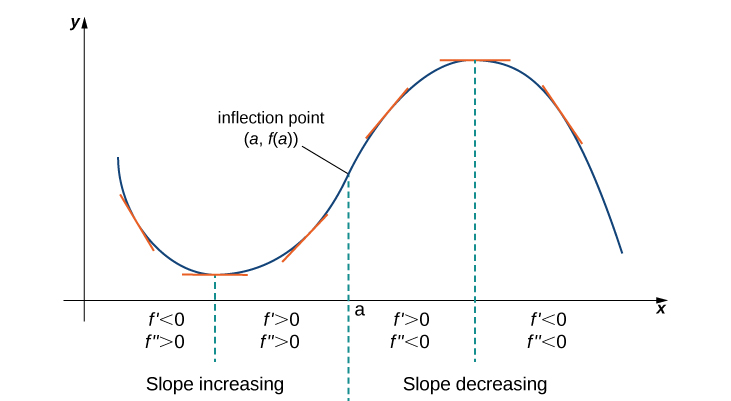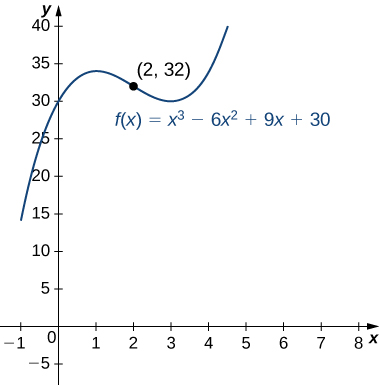| << Chapter < Page | Chapter >> Page > |
Let be a function that is twice differentiable over an interval
We conclude that we can determine the concavity of a function by looking at the second derivative of In addition, we observe that a function can switch concavity ( [link] ). However, a continuous function can switch concavity only at a point if or is undefined. Consequently, to determine the intervals where a function is concave up and concave down, we look for those values of where or is undefined. When we have determined these points, we divide the domain of into smaller intervals and determine the sign of over each of these smaller intervals. If changes sign as we pass through a point then changes concavity. It is important to remember that a function may not change concavity at a point even if or is undefined. If, however, does change concavity at a point and is continuous at we say the point is an inflection point of
If is continuous at and changes concavity at the point is an inflection point of

For the function determine all intervals where is concave up and all intervals where is concave down. List all inflection points for Use a graphing utility to confirm your results.
To determine concavity, we need to find the second derivative The first derivative is so the second derivative is If the function changes concavity, it occurs either when or is undefined. Since is defined for all real numbers we need only find where Solving the equation we see that is the only place where could change concavity. We now test points over the intervals and to determine the concavity of The points and are test points for these intervals.
| Interval | Test Point | Sign of at Test Point | Conclusion |
|---|---|---|---|
| is concave down | |||
| is concave up. |
We conclude that is concave down over the interval and concave up over the interval Since changes concavity at the point is an inflection point. [link] confirms the analytical results.

For find all intervals where is concave up and all intervals where is concave down.
is concave up over the interval and concave down over the interval
We now summarize, in [link] , the information that the first and second derivatives of a function provide about the graph of and illustrate this information in [link] .
| Sign of | Sign of | Is increasing or decreasing? | Concavity |
|---|---|---|---|
| Positive | Positive | Increasing | Concave up |
| Positive | Negative | Increasing | Concave down |
| Negative | Positive | Decreasing | Concave up |
| Negative | Negative | Decreasing | Concave down |

Notification Switch
Would you like to follow the 'Calculus volume 1' conversation and receive update notifications?